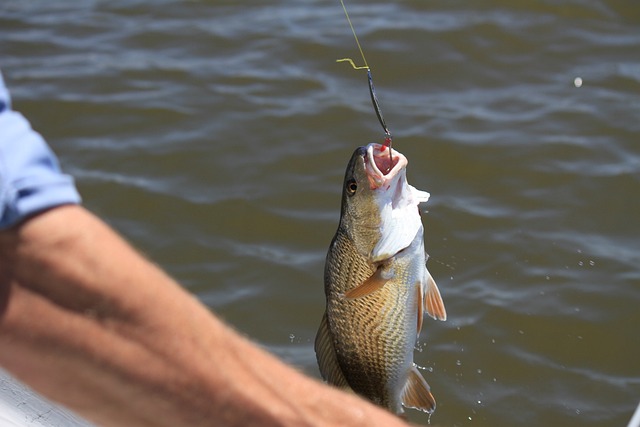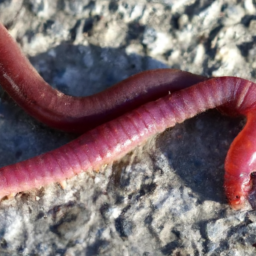So you’ve decided to go fishing and you’re excited about all the delicious fish you’ll be catching. But once you’ve reeled them in, what do you do next? That’s where cleaning and preparing the fish comes in. In this article, we’ll guide you through the process, step by step, so that you can enjoy the fruits of your labor at the dinner table.
First things first, you need to find a clean and spacious area to work in. A designated fish cleaning station would be ideal, but if you don’t have access to one, a clean outdoor table or even a large cutting board will suffice. Now, grab a sharp, sturdy fillet knife and let’s get started.
Once your workspace is ready, it’s time to clean the fish. Start by removing the scales. You can either use a blunt knife edge or a dedicated fish scaler. Hold the fish firmly and scrape the scales off from the tail towards the head. Rinse the fish under cold water to remove any loose scales.
In the next section, we’ll delve into how to gut and fillet the fish. Stay tuned for more detailed instructions and tips on how to properly clean and prepare the fish you’ve caught. Cleaning and preparing the fish you catch is an essential skill for any angler. Whether you are a seasoned fisherman or a beginner, knowing how to properly clean and prepare the fish ensures that you can enjoy the fruits of your labor and savor the delicious flavors of your freshly caught fish.
To get started, you will need a few essential tools. These tools will make the cleaning process much easier and more efficient. Here are the tools you’ll need:
Fillet Knife
A fillet knife is a long, thin, and flexible knife that is specifically designed for filleting fish. Its sharp blade allows you to make clean and precise cuts, ensuring that you can remove the fish’s flesh from the bones with ease. Make sure to choose a fillet knife that feels comfortable in your hand and has a sharp blade.
Cutting Board
A sturdy cutting board is essential for filleting and preparing fish. Look for a cutting board made of durable materials such as hardwood or plastic. It should be large enough to comfortably hold the fish and have a groove or well to catch any juices that may run off during the process.
Fish Scaler
A fish scaler is a handy tool that allows you to remove the scales from the fish’s skin. It typically has a serrated edge or small metal teeth that scrape off the scales. Using a scaler will make the cleaning process easier and prevent scales from flying off in all directions.
Fish Gutting Tool
A fish gutting tool is specifically designed to aid in the removal of the fish’s internal organs. It typically consists of a slim, elongated metal hook or blade that allows you to easily cut through the fish’s belly and remove the entrails. Having a gutting tool will make gutting the fish a much cleaner and quicker process.
Now that you have the necessary tools, let’s walk through the steps of cleaning and preparing the fish you catch.
Step 1: Removing Scales
The first step in cleaning a fish is to remove its scales. Scales can be easily removed by using the edge of a scaler or a blunt knife. Start by firmly holding the fish by its tail and scraping off the scales from the tail towards the head. Make sure to scrape off all the scales on both sides of the fish. Once you have removed the scales, rinse the fish under cold water to clean off any loose scales or debris.
Step 2: Gutting the Fish
To gut the fish, you will need a gutting tool or a sharp knife. Lay the fish on its side and make a shallow incision just below the gills, starting from the tail towards the head. Insert the gutting tool or knife into the incision and gently cut along the belly towards the anus. Be careful not to puncture any of the internal organs. Once the incision is made, use your fingers or the gutting tool to remove the internal organs, taking care to remove the intestines, liver, and other organs. Rinse the cavity thoroughly under cold water to remove any remaining blood or debris.
Step 3: Filleting the Fish
Filleting a fish requires a combination of precision and practice. Start by positioning the fish with its belly facing upwards. Locate the spine of the fish by running your finger along its back. Once you have located the spine, make a small incision just behind the gills and cut down towards the tail, keeping the blade of the knife as close to the spine as possible. Using long, smooth strokes, guide the knife along the spine, separating the flesh from the bones. Repeat this process on the other side of the fish. Once both fillets are removed, rinse them under cold water to remove any remaining blood or scales.
Step 4: Trimming and Deboning
After filleting the fish, there may be excess fat or pin bones that need to be removed. Use a sharp knife to trim away any excess fat or skin from the fillets. To remove pin bones, run your fingers along the fillet to locate any small, needle-like bones that may have been missed during the initial filleting. Use a pair of clean tweezers or needle-nose pliers to grip the bone firmly and pull it out in the direction of the fish’s head. Take your time and remove any remaining pin bones to ensure a pleasant dining experience.
Step 5: Final Cleaning
Once the fillets are trimmed and deboned, rinse them once again under cold water to remove any lingering debris. Inspect the fillets carefully to ensure that all scales, bones, and entrails have been properly removed. Pat the fillets dry with a clean paper towel to remove excess moisture.
Step 6: Storing and Freezing
If you do not plan to cook the fish immediately, it is important to store and freeze the fillets properly to maintain their freshness. Choose a suitable packaging such as freezer bags or vacuum-sealed bags that are specifically designed for preserving fish. Place the fillets in the bags, making sure to remove as much air as possible before sealing. Properly label the bags with the type of fish and the date of freezing. Place the bags in the freezer and make sure to use them within a few months for the best quality.
Step 7: Cooking and Enjoying
When it’s time to cook your freshly caught fish, the options are endless. You can pan-fry it, bake it, grill it, or even make a delicious fish stew. Select a recipe that suits your taste and the type of fish you have caught. Before cooking, season the fish with salt, pepper, and any other desired herbs or spices. This will enhance the flavor and bring out the natural taste of the fish. Cook the fish according to the recipe instructions, being careful not to overcook it.
Tips for Cleaning and Preparing Fish
Here are some additional tips to keep in mind when cleaning and preparing fish:
Keep the Fish Cold
To maintain the freshness and quality of the fish, it is important to keep it cold during the cleaning process. If possible, clean the fish immediately after catching it and keep it on ice or in a cooler until you are ready to clean it.
Use a Sharp Knife
Using a sharp fillet knife will make the cleaning process much easier and safer. A dull knife can slip and cause injury, so make sure to keep your knife sharpened regularly.
Practice Proper Hygiene
Fish can carry bacteria and parasites, so it is essential to practice proper hygiene when handling and cleaning fish. Wash your hands thoroughly before and after handling fish, and make sure to clean all tools, cutting boards, and surfaces that come into contact with the fish to prevent cross-contamination.
Conclusion
Cleaning and preparing the fish you catch is a rewarding and important skill for any angler. By following these steps and using the right tools, you can ensure that your fish is properly cleaned and ready to be cooked. Remember to practice proper hygiene and handle the fish with care to maintain its quality. Enjoy the fruits of your labor and savor the delicious flavors of your freshly caught fish.


